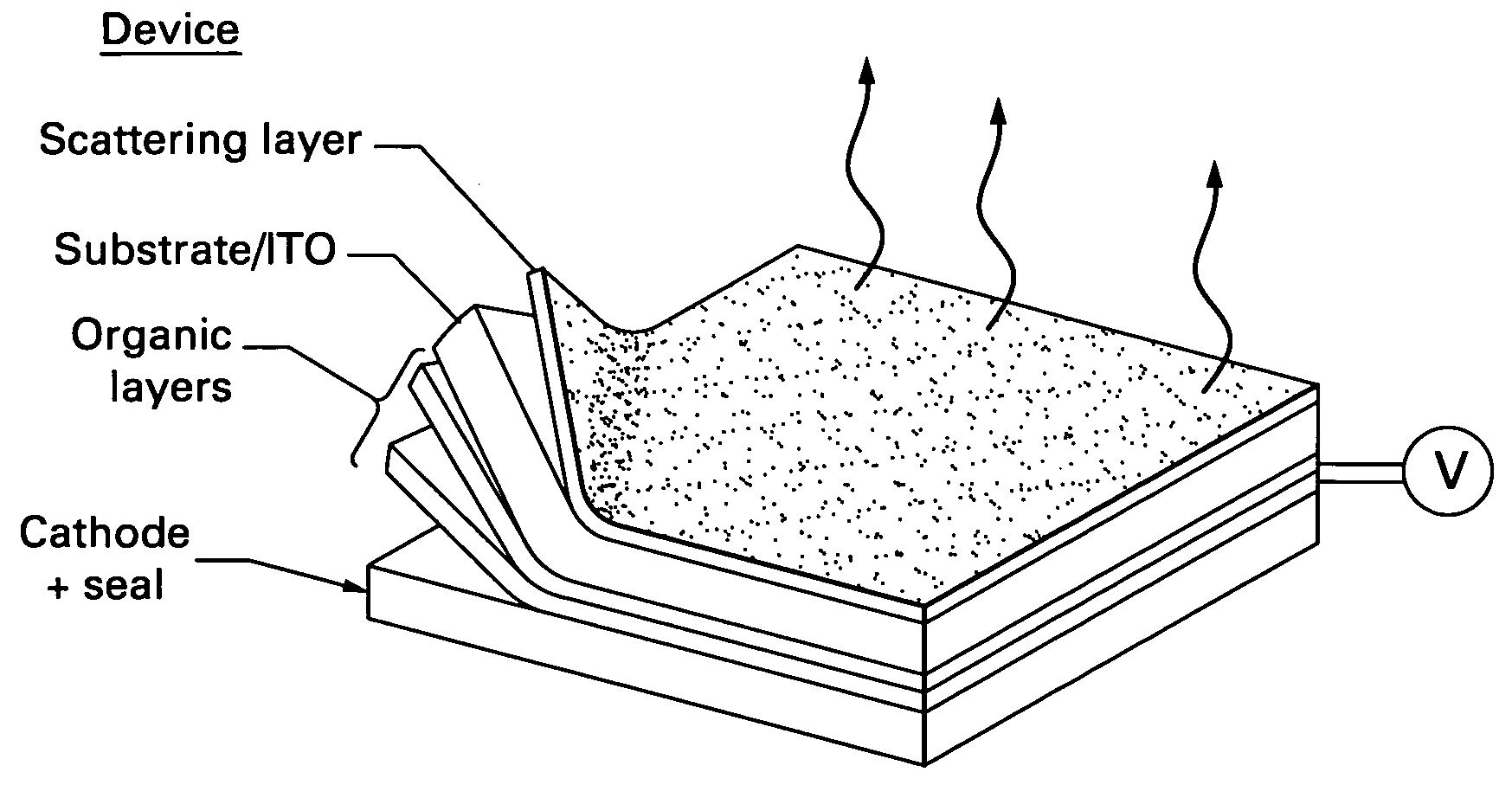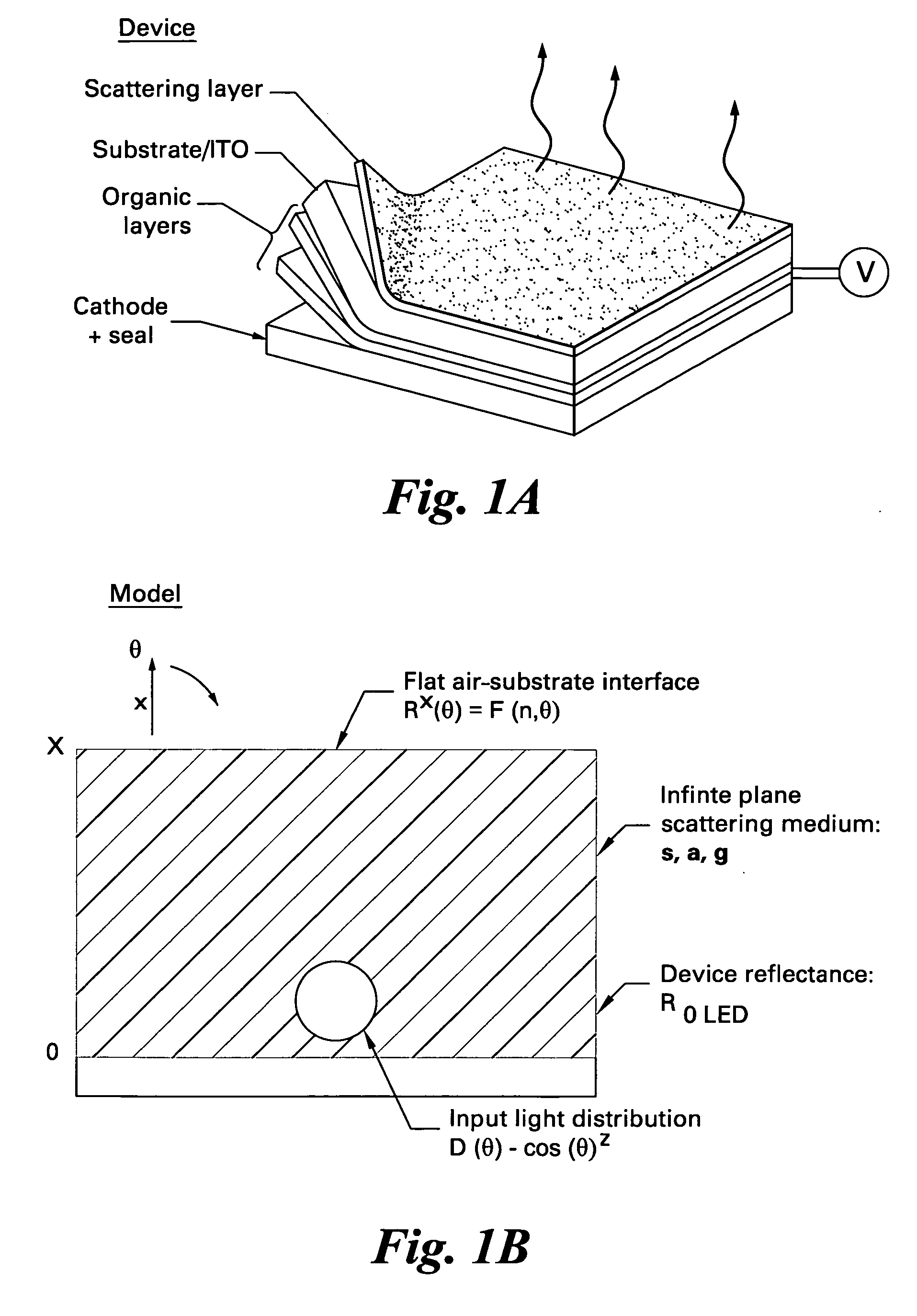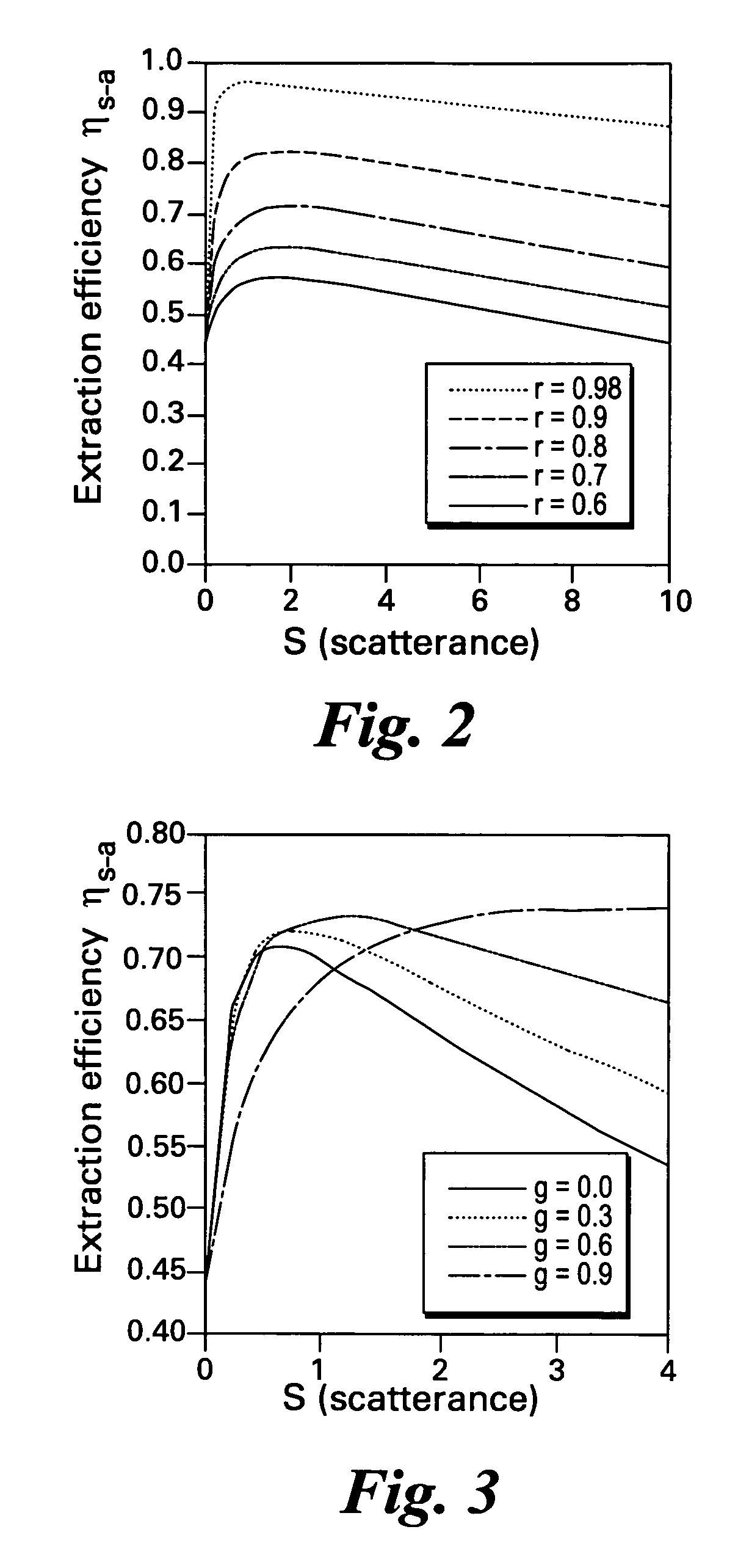Organic electroluminescent devices having improved light extraction
an electroluminescent device and light extraction technology, applied in non-linear optics, lighting and heating apparatuses, instruments, etc., can solve the problems of optical extraction efficiency of organic light emitting diodes, and achieve the effects of simple volumetric light scattering, efficiency enhancement, and enhanced light outpu
- Summary
- Abstract
- Description
- Claims
- Application Information
AI Technical Summary
Benefits of technology
Problems solved by technology
Method used
Image
Examples
Embodiment Construction
Electroluminescent devices are limited by the optical extraction efficiency, ηex, the ratio of light generated within the device to light emitted into the ambient. For OLEDs, typical estimates for this efficiency range between 0.17-0.5. Thus, a significant fraction of the electrically generated light is lost within the device. This is in sharp relief to the case of mercury vapor fluorescent lighting where the extraction efficiency is close to unity. The origin of this loss mechanism is the fact that light incident at angles above the critical angle of a substrate-air interface undergoes total internal reflection and is never emitted into the ambient.
For an OLED, the optical extraction efficiency can be divided into two components: the injection efficiency from the active layers into the substrate ηOLED−s, and the extraction efficiency from the substrate to the ambient μs−a; i.e.
ηex=ηOLED−sηs−a (1)
In this disclosure, we focus primarily on the latter term, a...
PUM
 Login to View More
Login to View More Abstract
Description
Claims
Application Information
 Login to View More
Login to View More - R&D
- Intellectual Property
- Life Sciences
- Materials
- Tech Scout
- Unparalleled Data Quality
- Higher Quality Content
- 60% Fewer Hallucinations
Browse by: Latest US Patents, China's latest patents, Technical Efficacy Thesaurus, Application Domain, Technology Topic, Popular Technical Reports.
© 2025 PatSnap. All rights reserved.Legal|Privacy policy|Modern Slavery Act Transparency Statement|Sitemap|About US| Contact US: help@patsnap.com



